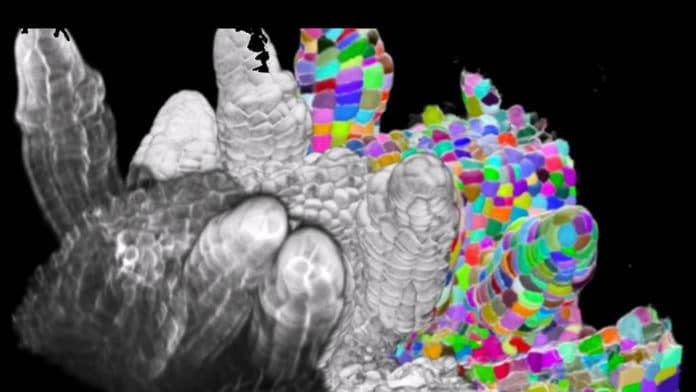Plants organs ensure that plants can develop and grow. They ensure that the plant can develop and grow and ensure its species’ survival by forming seeds.
But how do plants shape their organs? How is genetic information used to build the three-dimensional form, i.e., the shape of an organism?
In past studies, scientists used 2D technologies to determine how a plant gets its shape. But, 2D approaches only allow partial insights into this process and, unfortunately, often produce incorrect results.
Kay Schneitz, Professor of Plant Developmental Biology, the Technical University of Munich (TUM), and his colleagues used artificial intelligence to develop a novel computer-based image processing method for plant sciences. This new tool, called PlantSeg, enables the most accurate and versatile analysis of plant tissue development in 3D to date.
PlantSeg enables studies of the development of plant organs with unprecedented precision and the analysis of tissue changes caused by pest infestation or environmental stress, such as heat. The scientists hope that this will give them a better understanding of how plants react to environmental conditions.
To study the morphogenesis of tissues at the cellular level, individual imaging cells become necessary. For this, the cells must be separated from each other; in other words, “segmented” to analyze how they change over time.
Anna Kreshuk, the senior author of a recent publication of the group’s research, said, “In plants, there are cells that look extremely regular, like rectangles or cylinders, in a cross-section, but you also have cells with “high lobeness” that is to say protrusions, which make them look more like puzzle pieces. These are more difficult to segment because of their irregularities.”
The scientists trained PlantSeg using 3D microscope images of reproductive organs and roots of the plant model Arabidopsis thaliana, also known as thale cress. From these images, the algorithm had to learn to identify inconsistencies in cells’ sizes and shapes. It mastered this challenge so well that the software can now be used for practically all plant organs.
Kreshuk said, “This method could also be an adapter for animal tissue. With animals, we would probably have to retrain parts of the software, but it would work. With such an adaptation of the software, the group will have created a tool of great significance beyond the plant world and with which, for example, disease-related tissue changes will be able to be analyzed much more precisely.”
Journal Reference:
- Adrian Wolny et al.: Accurate and versatile 3D segmentation of plant tissues at cellular resolution. eLifeScience, online veröffentlicht am 29. Juli 2020: DOI: 10.7554/eLife.57613
